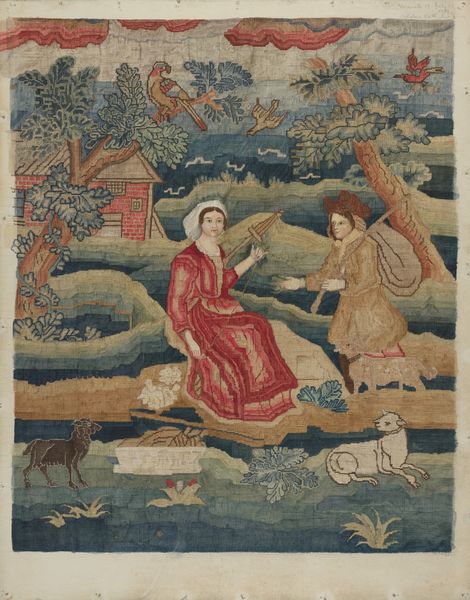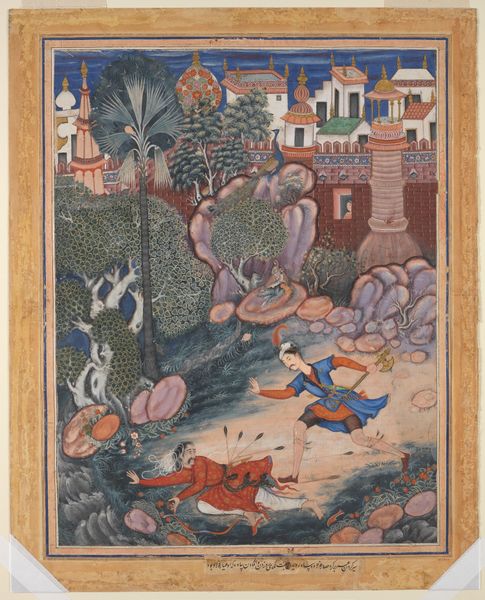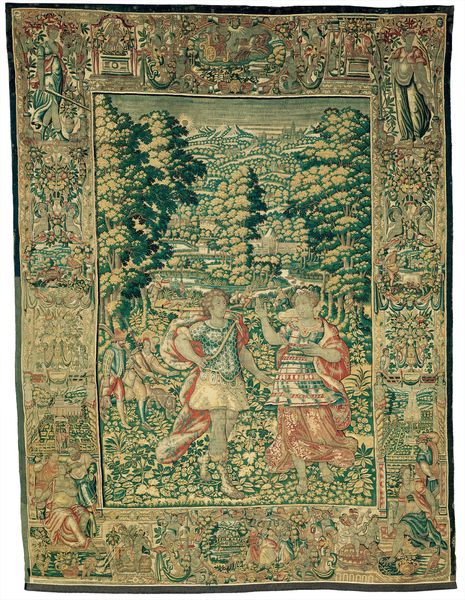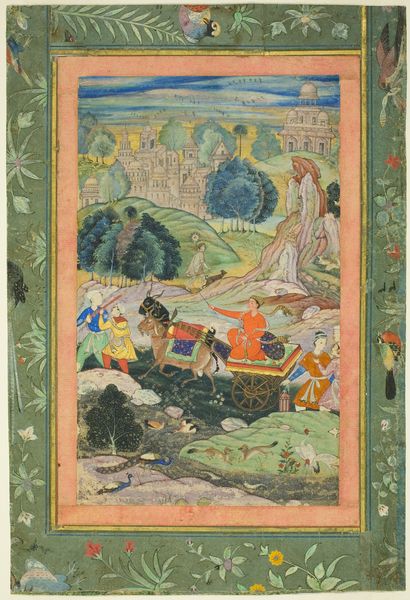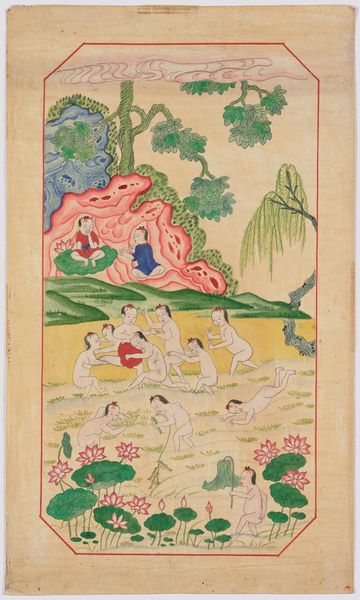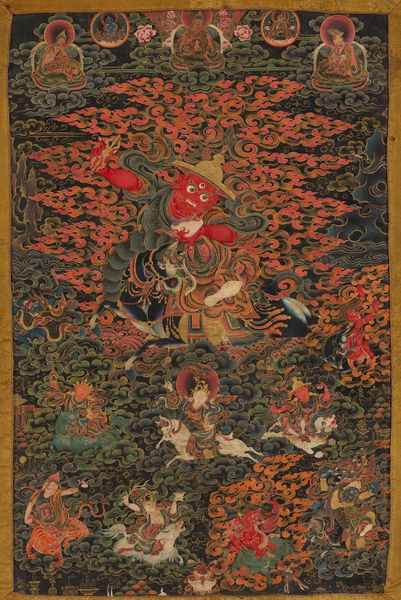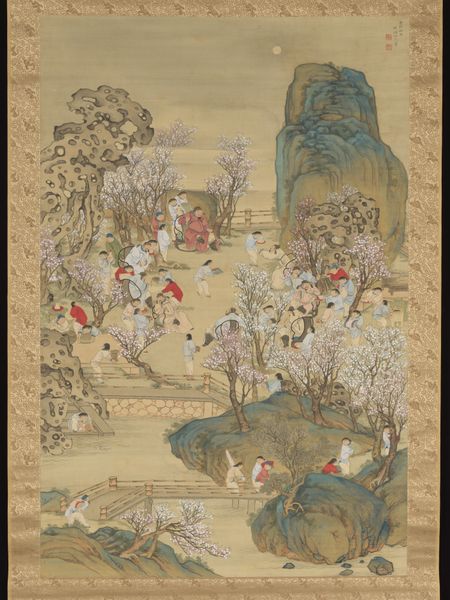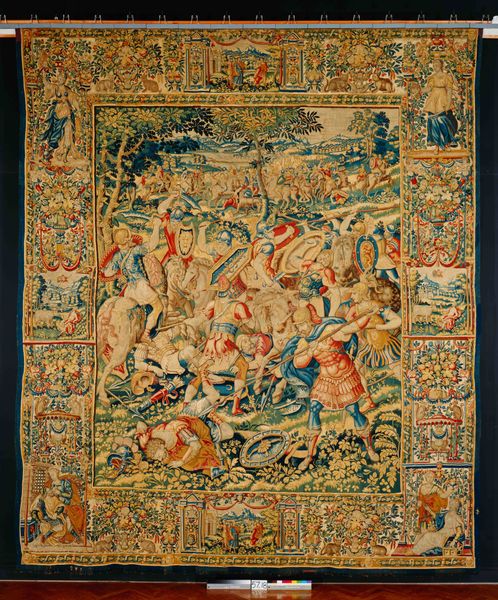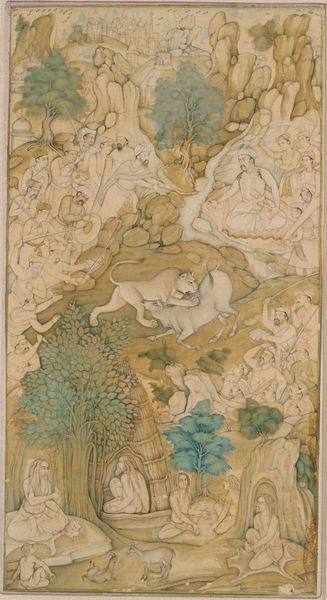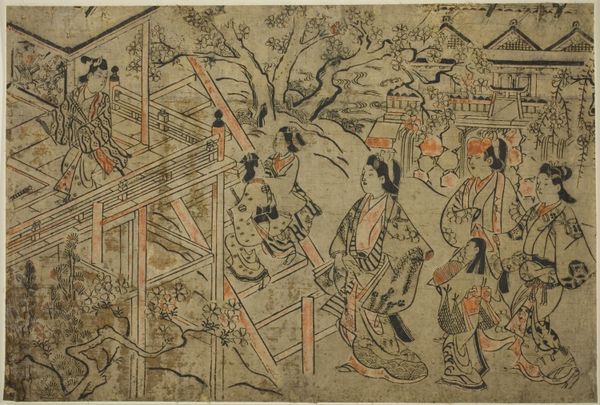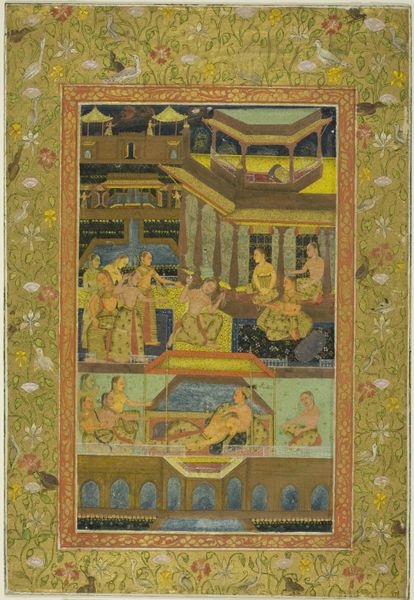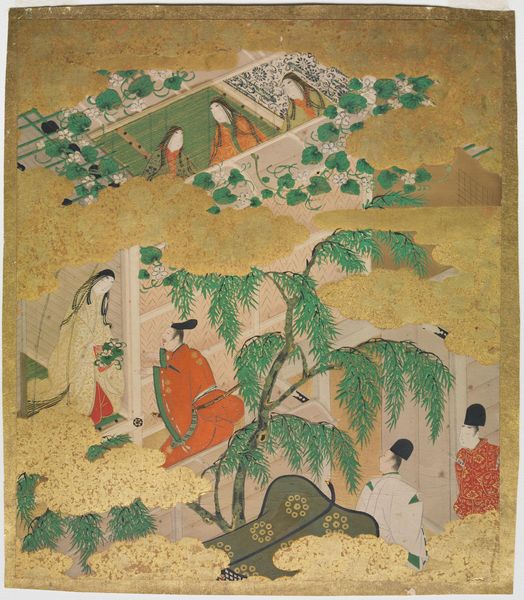
fibre-art, textile
#
fibre-art
#
landscape
#
textile
#
figuration
Dimensions: 32 x 25 in. (81.3 x 63.5 cm)
Copyright: Public Domain
Curator: I’m struck by the whimsical charm of this scene. It is an "Embroidered Chair Back" crafted between 1755 and 1765, now housed at the Metropolitan Museum of Art. The identity of the needleworker is unknown, though the museum attributes it to Mehitable Starkey, the fiber-art rendering displays a tableau of rural life with human figures amidst a pastoral backdrop teeming with birds and animals. Editor: The embroidery work, rendered on textile, exudes a strong horizontal rhythm. Note how the landscape is structured into layers: from the foreground populated with deer, to a mid-ground showing several buildings, finally arriving at the background where human figures frolic near other buildings, the upper part of the image framed with tall and leafy trees. It produces a peculiar feeling; there's almost a sense of fairytale about it. Curator: Yes, the placement of people in such close proximity to both the livestock in the background brings a sense of domestic familiarity that speaks volumes. But I read something different here, more complex. During this period, domestic crafts were tools for women's expressions—they afforded a certain level of agency, albeit within the domestic sphere, by enabling them to represent their world. The depiction of rural idyll could also subtly challenge perceptions about social structures or the landed gentry, allowing for a delicate dance between artistry and muted social commentary. Editor: Perhaps, but before getting there, consider the rendering of space and form. The artist utilizes flat, stylized forms to evoke the texture of foliage, figures, and architecture; consider, also, how each component receives nearly the same amount of meticulous and obsessive laboring attention and treatment, whether animal, vegetable, mineral, or human. Curator: Certainly. The materiality of the piece contributes to the narrative and its cultural meanings. And there is such freedom here in both the design and subject matter that I'm compelled to place it in its specific cultural setting; needlework held a distinct place, marking gendered labor, expressions, and acts of resistance in their own right. Editor: Still, it is equally relevant to observe that the chromatic unity—predominantly of blue, goldenrod, and reddish hues—lends to the object a notable elegance and harmony, and despite its density, the composition avoids any true crowding or sense of compression. Curator: Looking at the piece as a historical object alongside its artistry and aesthetic impact allows me to see deeper and, equally, invites more critical reflection. Editor: I’d say its most striking feature is simply the commitment with which forms and the chromatic design appear to meet in satisfying aesthetic unity.
Comments
No comments
Be the first to comment and join the conversation on the ultimate creative platform.
